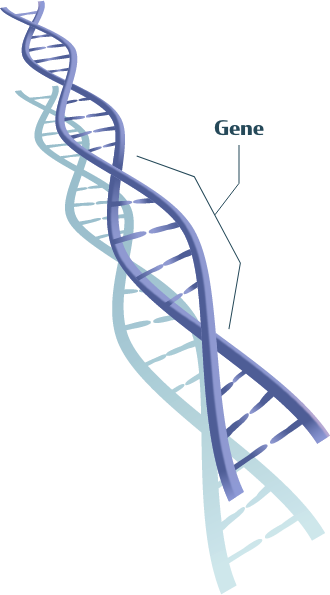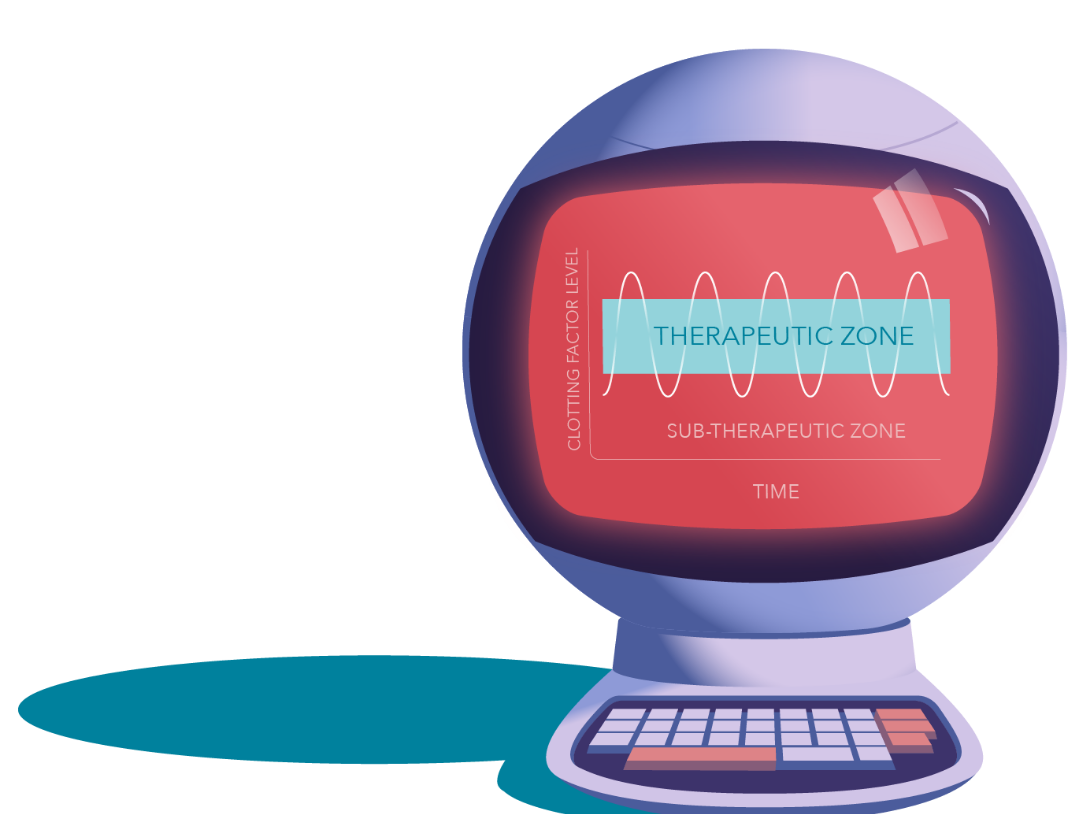
Since a single gene mutation is responsible for hemophilia A or B, gene therapy may be a potential treatment option.
What are the
different types of
hemophilia?
There are two main types of hemophilia, each caused by a single genetic mutation on a different gene:
- Hemophilia A – Caused by a deficiency in factor VIII protein
- Hemophilia B – Caused by a deficiency in factor IX protein. This is also sometimes called Christmas Disease.1
In hemophilia A, the F8 gene is mutated, so the body produces a low amount of factor VIII protein.
In hemophilia B, the F9 gene is mutated, and the body produces a low amount of factor IX protein.
These proteins, known as clotting factors, work together to help blood clot properly and stop bleeding. A low level of either factor VIII or factor IX proteins can impact the steps needed for hemostasis.1

According to CDC data, most people with hemophilia are diagnosed at a very young age.3
The average age of hemophilia diagnosis is:
- 36 months – mild hemophilia
- 8 months – moderate hemophilia
- 1 month – severe hemophilia
Since there is often family history of hemophilia, sometimes doctors conduct prenatal testing before birth to diagnose hemophilia. Doctors can also diagnose babies soon after birth with a special blood test. One third of babies born with hemophilia have no known history of the disease and a diagnosis is made after an unusual bleeding event occurs.3
Since hemophilia is an X-linked disorder, males with a single X chromosome are much more likely to inherit hemophilia than females with XX chromosomes.4
Clotting factors are only found on the X chromosome, not the Y. So, if a male has the mutation on his only X chromosome, he’ll have hemophilia. If a female has the hemophilia mutation on one of her X chromosomes, it’s likely her other X chromosome will function normally, offering some protection against developing hemophilia herself.
In some cases, females with the mutation on only one X chromosome can still experience mild bleeding symptoms. Women with the hemophilia mutation are most likely a hemophilia carrier and can pass the disease down to children. It’s possible for hemophilia to be hidden within a family for many generations if it passes only through females who do not experience bleeding symptoms.4
References
- What is Hemophilia?. Centers for Disease Control and Prevention. Accessed 02-12-24.
- Hemophilia A. National Bleeding Foundation. Accessed 02-12-24.
- Data & Statistics on Hemophilia. Centers for Disease Control and Prevention. Accessed 02-12-24.
- How Hemophilia is Inherited. Centers for Disease Control and Prevention. Accessed 02-12-24.
- Treatment of Hemophilia. Centers for Disease Control and Prevention. Accessed 02-12-24.
Download a summary about the potential of gene therapy research in hemophilia.
Download Brochure

